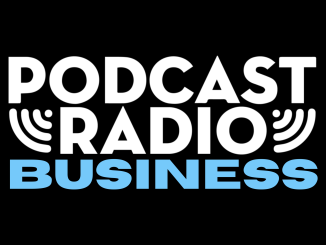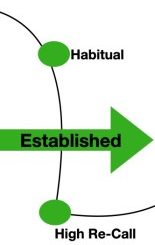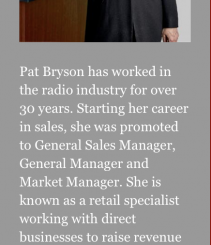
Licence to change: BBC future funding report welcomed
We do not recommend a funding model that places BBC radio behind a paywall – Licence to change: BBC future funding report welcomed by Radiocentre […]

We do not recommend a funding model that places BBC radio behind a paywall – Licence to change: BBC future funding report welcomed by Radiocentre […]

On day two of the ABU-Rai Days Conference, Steve Ahern, Head of the ABU Media Academy, gave an overview of the challenges to transformation in the Asia Pacific region.Steve began by highlighting the positive changes the pandemic brought: speedier digitisation, smarter work practices and newer delivery methods.However he acknowledged the purpose of the session was to highlight the challenges in such a varied region. Internal challenges included:
Lack of money, most Asian PSB take advertising
Unreliable electric power and internet unreliability, difficult for remote studios during pandemic
Transmission issues – sand, water, jamming, disasters
Old studios, new ways of production not yet achieved
Organisational approach to change – structures
Regulatory restrictions – NHK forbidden to be online
Staff mindset, unions, outdated promotion practices
Outdated training styles – didactic not point of need
While the external challenges for the region included:
Internet and phone access/expense
Not understanding audience attitudes – no longer trust, don’t want adversarial bad news, news I can use rather than news I should have
Different generational habits and expectations
Cyber attacks
Misinformation/Disinformation
Advertising agency reprioritisation to digital platforms
Internationalisation of content, less protection of culture
Increased competition: Podcasting and VOD
Unlike Europe there is no region wide uniting body so regulation and trade require bilateral relationships
Steve used two polar examples to illustrate some of these changes. The first China, where recent research by McKinsey showed that Chinese youth, due to the current financial boom had lots of money, were spending not saving but creating a demand for luxuries, including travel and media on demand. The report found that Chinese youth want:
Spontaneity
Personalisation
Ease of use
Connectivity
Sustainability
Brand power
Privacy (without giving up the other benefits)
The study concluded that, “In just three more years Gen z will make up a quarter of the Asia-Pacific region’s population. By 2030, half of all transactions in the world will take place in Asia.”The second example was Afghanistan, where the face of broadcasting has changed recently as follows:
Many stations closed or reformatted
Entertainment and music programming more restricted
Intimidation and killings of journalists
Staff and Boards replaced, controlled
Fewer women on air and on screens
Advertisers cannot pay their bills (including government)
In another session, Davide Schiappapietra, the Head of Language Content at SBS Australia, discussed ‘creating vibrant digital communities.’He said: “Public broadcaster SBS in Australia is about promoting social cohesion, how we identify with new communities through connecting on similar interests.” We are now using Augmented Reality to tell stories of people we’re talking too, convert their content to podcast feeds, music channels, feedback gathered regularly, he said.“We are reaching out on socials and still trying to understand TikTok…“What matters is the content this can then be on different platforms… we are platform agnostic… Shaping content on where the audience is i.e. WeeChat.” […]

In some ways, it feels odd to be the new kid, especially at an organisation where I have worked since 2009. […]

Podcast Radio Business is the first brand extension from Podcast Radio, launching on Tuesday. […]

By Peter YiamarelosIn part one we took a look at some of the important aspects of the radio- listener relationship needed to build a successful station. In this edition we’ll look at the further aspects involved.EstablishedThe “established” phase is a when a listener will be happy to tell their friends they are a listener of your station or breakfast show, but they are still not loyal fans yetYes they are an established listener and are habitually listening to you daily but they are still listening to other stations as well.Some content directors are happy with that achievement. BUT these listeners don’t stay in this phase for long, they either become loyal fans to your station or they become loyal fans of your competitor.This is the last phase where you have to fight to win this listener over. Because once you do win them over it becomes very hard to lose them. Even when you make inevitable major content adjustments like launching a new breakfast show, changing the music or format for example.How? with over an above-promotions, with money can’t buy prizes, music tactics an entertaining content that your competitors can’t copy.
LoyaltyThis is the phase you’ve been waiting for.The loyalty phase that you and the team have worked so hard to achieve.When this stage is achieved you can use and communicate to this community of listeners that have been out of reach in previous stages of the listener journey.Here is where you can capitalise the wealth of information available to you from this group. Through focus groups, call to action events and tactics you can drive this audience.Loyalty is the foundation you can build on audience growth incrementally.At this point your overall share is growing and gaining momentum.Remember once your station gets to no.1 to implement a defence strategy to maintain that no.1 position.A tool to help retain loyalty, while also making noise to generate awareness and all previous phases, is podcast catchups.This tool is essentially a small effort to allow your listeners to catchup on what they missed out on from their favourite show.While podcast catchups are used for the breakfast shows, it’s not uncommon to have podcast catchups for drive shows or other specialist shows within your overall line up.One of the other benefits of having a loyal listener base is that these listeners will drive most of your Time Spent Listening (TSL). While your casual listeners will drive your overall cumulative listenership numbers, your strong TSL numbers is what will drive your overall SHARE.Evangelists are those fans who talk about your station, music, or breakfast show…a lot. It’s the strongest form of word of mouth there is. Those who tell their friends, “did you hear this on station x?”These evangelists will also regularly share your digital content.That’s why your content distribution structure for social media must be set up to “spread the word” about your station by your evangelists / social reactorsCross check to ensure your social accounts are active and updated often.Finally, while your loyal fans will stick by you in the tough times, do not take them for granted. Look after them, spoil them. […]

Selling Radio Direct with Pat Bryson60 or 90 days ago, if you asked a client what their Number 1 concern was, the answer was probably “finding enough staff.” That’s still an issue, but in the last 60 days or so, it has slipped to Number 2 or 3. It’s been replaced by “the cost of fuel and products.”Each day our clients wake up and try to successfully navigate an ever-changing business landscape. They juggle having the right products at the right time, taking care of customers with skeleton staffs, competing with hundreds of places to buy what they sell, and trying to make a profit to stay in business. It’s a balancing act!Enter the world of rising fuel costs. Any product that moves anywhere, whether by air, truck or train is affected by rising fuel costs. The cost of containers full of merchandise stranded at ports has risen ridiculously.As the cost of goods goes up, only a portion of that cost can be passed along to their customers. The only way to safeguard their profit margin is to raise top-line revenue. That’s where advertising comes in.Advertising creates traffic. If we produce more warm bodies into stores, and the store converts them into sales, revenue goes up. Smart business owners know they must invest money to make money. High cost of doing business is EXACTLY why they need to advertise.I’d like to point out that we need to constantly be asking the question, “What’s the Number 1 problem you are dealing with today?” Their answer will change month to month, sometimes even week to week. What should their message be? The answer to this question may tell us.Keeping pace with the shifting business landscape is a never-ending job: for us and for our clients. Keep asking questions. Help our clients to find answers. Higher revenue awaits for our clients and for us!
Happy Selling! […]
Copyright © 2026 | MH Magazine WordPress Theme by MH Themes